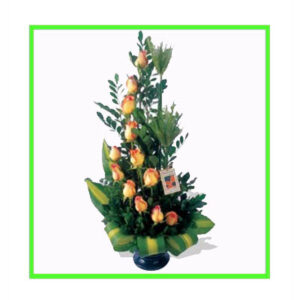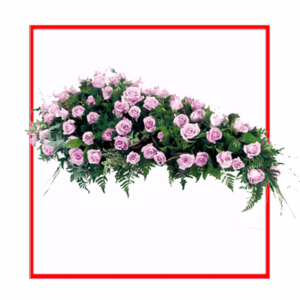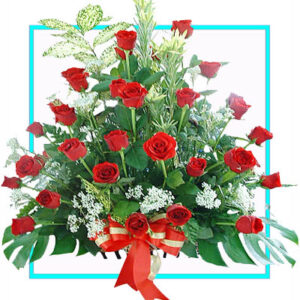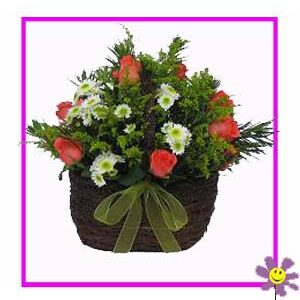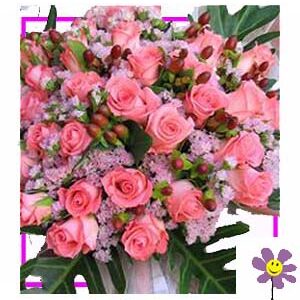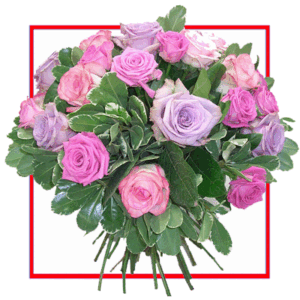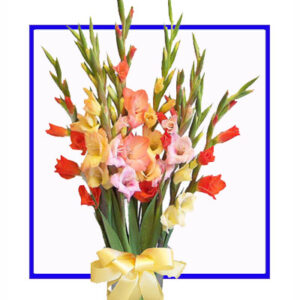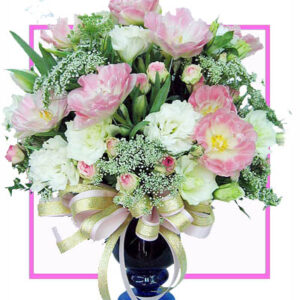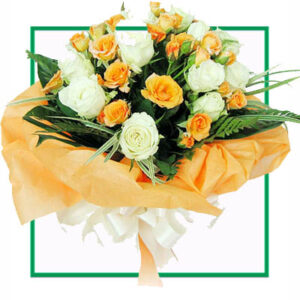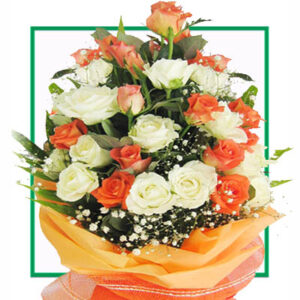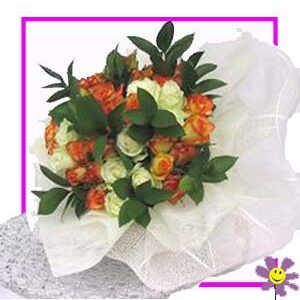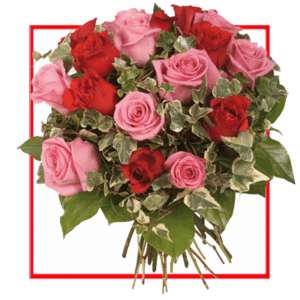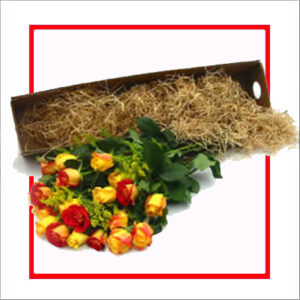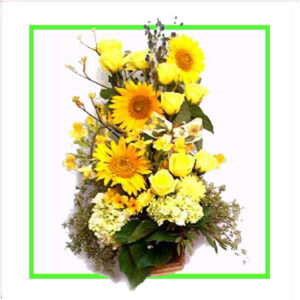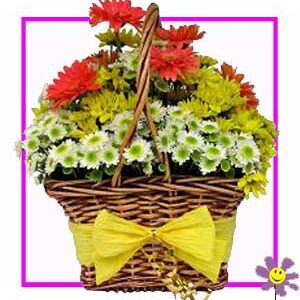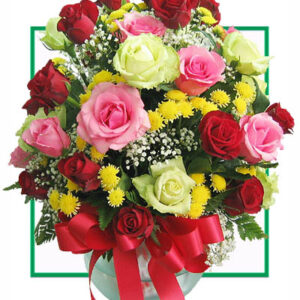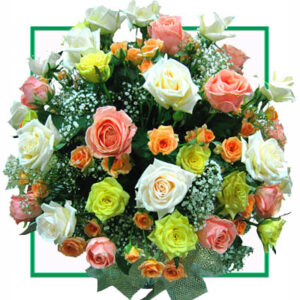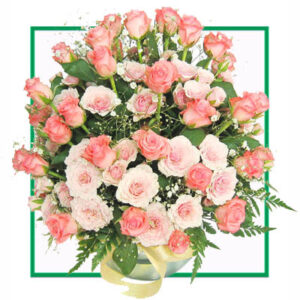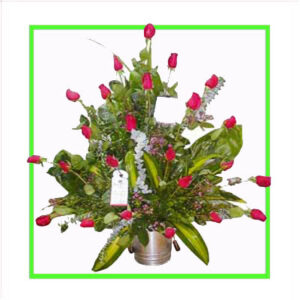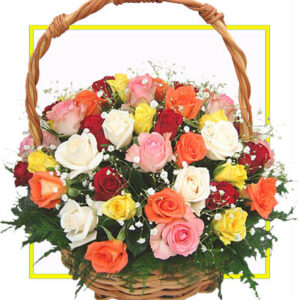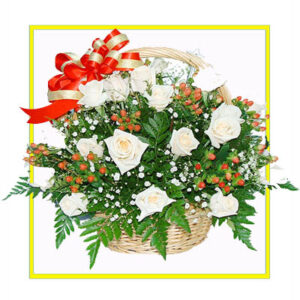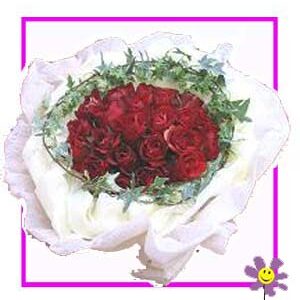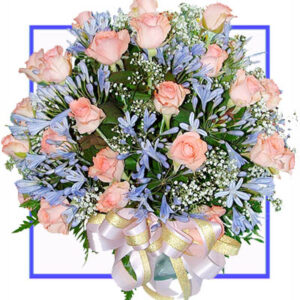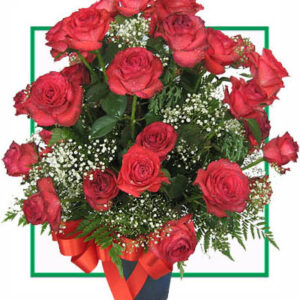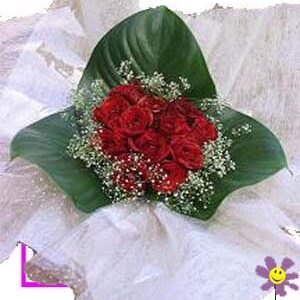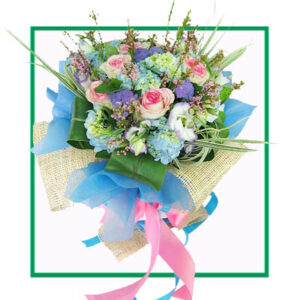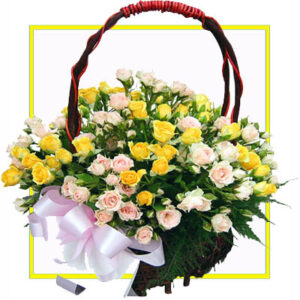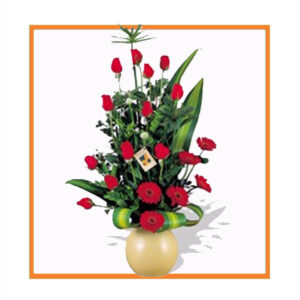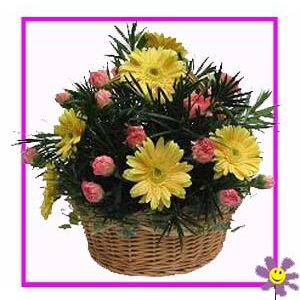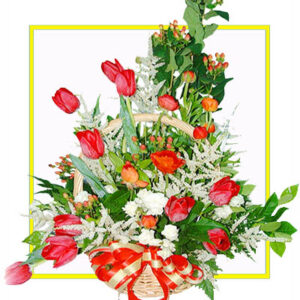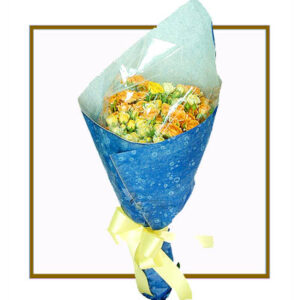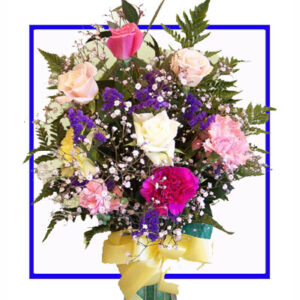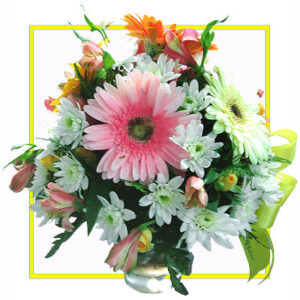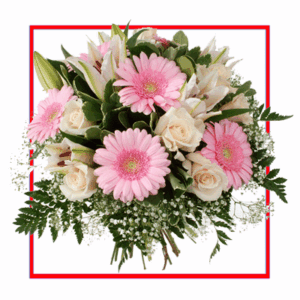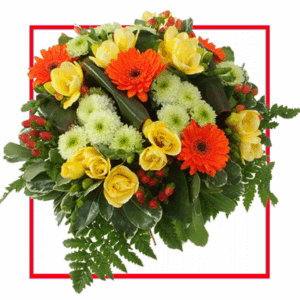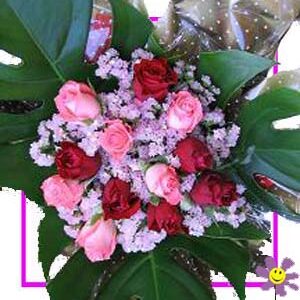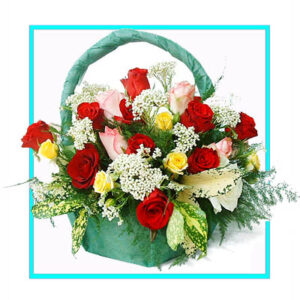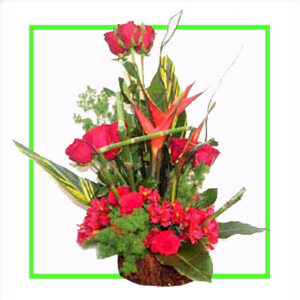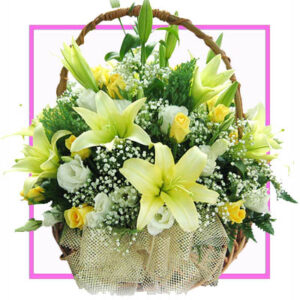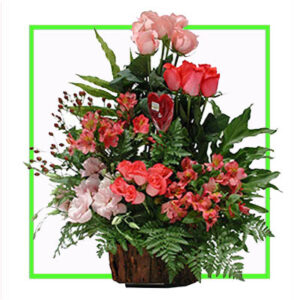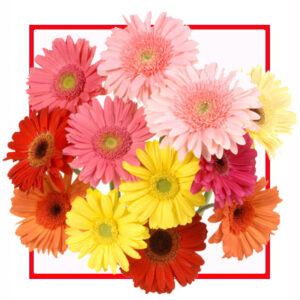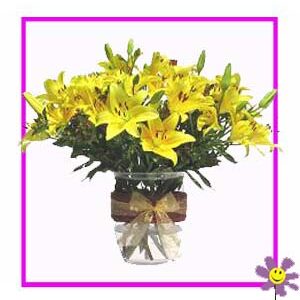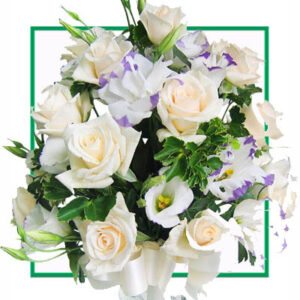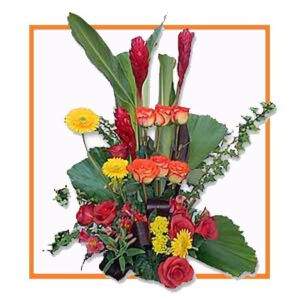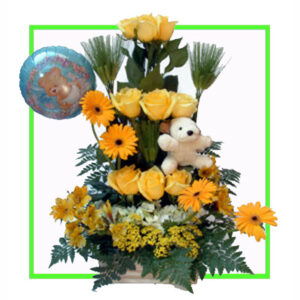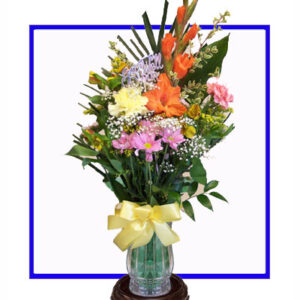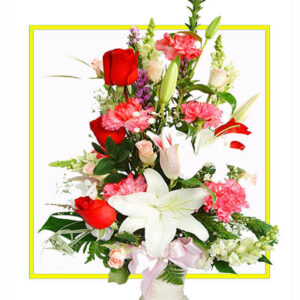Sri Kodanda Ramaswamy Brahmothsavam: It is celebrated for eleven days from Chaitra Suddha Navami to Bahula Chaviti (March–April) at Buchireddipalem town in Nellore district. On the Navami day in the morning ‘Dwajarohanam’ is performed and in the evening, the Lord with his consorts is taken on Adi Sesha Vahanam on the main streets of the old town. On Dasami day Lord is made to ride on the Hamsa vahanam with beautiful flower decoration. On Ekadasi day the lord is atop Vyali vahanam in his majestic best. On the Dwadasi day Lord is carried on his shoulders by his most ardent devotee Hanuman and is a very popular vahanam among certain communities of the town. On the Triyodasi day in the morning Lord goes around the town in his famous Mohini avatar and in the night Lord is atop Golden Garuda with huge following of the public is taken out of the temple in a takeoff mode. This vahanam is made to go around the entire town and returns to the temple almost at the day break. Seetharamula Kalyanam is celebrated with full religious fervour with huge attendance from people from all over on the Chaturdasi day and this event is generally more popular among the women folk who throng to get the ‘Talambralu’ (Rice mixed in turmeric and used during the celestial wedding). Seetha Lakshmana sametha Rama is taken to the southern end of the city to shower their blessings on the town folks. Once they return Lord Rama goes on the Gaja vahanam On the pournami day the three deities are put on the elaborately decorated ‘Ratham’ (Temple car) and this ratham is pulled by the thousands of devotees who visit the town from far and near for this event. Normally it takes about 45 minutes for the Ratham to complete its journey and reaches the resting place. During the evening hours the Lord is taken for a boat ride on a specially built float ‘Theppa’ which is well decorated with lights in the temple tank for three rounds. On completion of the Theppotsavam, Lord goes around the town in Krishna avatar on ‘Ponnamanu seva’ On the Padyami day Lord goes on his Ashwa vahanam and there is a story of ‘Paruveta’ on triyodasi day chakrasnanam is performed and Dwaja avarohanam is conducted.
The famous Sri Mallikarjuna Swamy Kamakhsi Tai temple is located on the bank of river Pennar, about 12 km (7.5 mi) from Nellore. It has good connections with the Railway station at Nellore. It attracts many pilgrims. The village is part of Buchireddipalem Mandal. In Tretayuga Mahamuni Kasyapa Brahma performed yagna and pleased Lord Mallikarjuna Swamy thus this place is named as ‘Yagnavatika Jonnawada’. Sri Mallikarjuna Swamy Kamakhsi tai grant to the innumerable devotes their desires, as their God head. Since then he continues conferring boons and his blessings on his devotees. This temple is constructed in the year 1150 (Tretayuga). The goddess Kamkshi is believed to be an incarnation of Shakti. A ‘Sri Chakram’ was installed here by Sri Jagadguru Sankaracharya. Pilgrims take a holy dip in the lake known as Kachpateertham, near the temple, which washes away all their bad karma. Brahma Rushi Sri Kashyap Mahamuni visited Bhoolokam (The Earth) and wanted to perform Yagna and chosen north of vedadri as Yagna Vatika (place to perform yagna) after successful completion of the Yagna a bright light appeared. It has spread over the whole bhoolokam. Later Lord Eswara appeared as Lord Mallikarjuna, who came out from fire of Yagna.
Later Tikka (1223–1248), father of the famous king Manumasiddhi II, extended the sway of the Nellore Telugu Chola family as far south as the Kaveri river. He owed nominal allegiance to the already crippled Chalukya-Chola emperors of the south, but was practically an independent ruler. Along with the Hoysala king Vira Narasimha, he helped the Chalukya-Chola ruler Rajaraja Chola III in restoring him back to his throne by repulsing the attacks of Aniyanka Bhima, Kopperunchinga II and the Pandyas. Subsequently, when the Vira Narasimha’s successor Vira Someshwara, desirous of making the Chalukya-Chola ruler a puppet in his hands, joined hands with the Pandyas and attacked Rajendra III, Choda Tikka came to the rescue of the Chola emperor. He defeated both the Hoyasala and the Pandyan forces and got thereby the Tondaimandalam region for himself. He even assumed the title Cholasthapanacharya. During the reign of Tikka’s son and successor Manumasiddhi II (1248–1263), the power of the Nellore Cholas was at its lowest ebb.
In the year 1260, a dangerous feud broke out between Manumasiddhi and Katamaraju, the chief of Erragaddapadu in Kanigiri region. The feud was on the issue of the rights of the two princes to use certain wide meadows as grazing grounds for their flocks of cattle. It led to the fierce engagement of the two sides and the bloody battle was fought at Panchalingala on the Paleru river. Manumasiddhi’s forces led by Khadga Tikkana, the cousin of poet Tikkana won the battle, but the leader perished. This feud and the consequent battle formed the theme of the popular ballad entitled Katamaraju Katha. Shortly after this disastrous battle, Manumasiddhi II died. With the death of Manumasiddhi II, the Nellore kingdom lost its individuality, became a battle ground between the Kakatiyas and the Pandyas and changed hands frequently. In the reign of the Kakatiya ruler Prataparudra II, the Nellore region became part and parcel of the Kakatiya empire and lost its political significance.
This is a very ancient sacred place (pilgrim centre). Legend says that Lord Narasimha manifested himself here as a huge of rock in “Yoga mudra” (in an entwined contemplative posture) and hence it acquired the name of “Penusila” (huge rock) and in course of time became famous as “Penchalakona”. Legend has it that after slaying the demon Hiranya Kasipa, Lord Narsimha bathed in Penchalakona and withdrew that “Avatara”(incarnation) of Narasimha, shedding his anger and ferocity. The Lord here goes by the name of Somasila Narasimhaswamy and has become one of the Nava Narasimhas (nine manifestations). People believe that because the sage Kanva resided in this area in the past, the river flowing here acquired the name Kanva Nadi and that with efflux of time it became Kandaleru. It is also learnt that the temple was renovated in the 10th century.
There was a branch of the Telugu Chodas which ruled from Nellore and were the chieftains of the Kakatiyas. The Telugu poet, Tikkana, in the introduction of his Nirvachanottara Ramayanamu, gave an account of the history and antecedents of this family. These Chodas also claimed descent from the famous Karikala Chola. They ruled over their kingdom consisting of the Nellore, Cuddapah, Chittoor and Chengalput districts with Vikrama Simhapuri (modern Nellore) as their capital. Chola Bijjana was the first important chief in the Nellore Choda clan. As a feudatory of the Western Chalukya Someswara I (1042–1068) of Kalyani, he took part in the wars of the Chalukyas and Cholas. In recognition of the loyalty and services of his descendants to the Chalukyas of Kalyani, Vikramadiya II (1076–1126) appointed them as rulers of Pakanadu.
The region has a combination of religion, nature and history in its expanse of tourism. Some of the famous temples of the region are Ranganayaka Temple, Jonnawada, Penchalakona, Mahalakshmi temple in Fathekhan Pet, Narasimhskonda, Erukalala Parameswari Temple, Barashahid Dargha, Rajarajeswari Temple, Mulasthaneswara Temple (Lord Shiva), Ayyapa Temple, Golagamudi, Kasumur Dargha, Adavilo Vinayakudu (Gudur), Ammavari temple in Sulurupeta, Srivenkateswarapalem (between Bitragunta and kavali), Someswaralayam (Somasila) and a lot more. The places in Nellore district which are a treat for the eyes of a traveler are Somasila Dam, Kandaleru Dam, Pulicat Lake and the Nelapattu Bird Sanctuary. The Udaygiri fort which is at a distance of 100 kilometers from Nellore stands as a historical testimony of the region.
The climate of Nellore city is a typical tropical maritime climate, with warm, humid summers and mild winters. April and May are the hottest months and the hot conditions generally last till the end of the June. December, January and February are the coolest months. As the Bay of Bengal is at a distance of 24 kilometres (15 mi) from the city, the sea breeze renders the climate of the city moderate both in winter and in summer. Humidity level in the city is high due to its proximity to the coast. Nellore does not receive the south-west monsoon. Rainfall in Nellore occurs between the months of October and December due to the north-east monsoon. This period gives about 60% of the city’s annual rainfall. Cyclones are common in the city during this period, causing floods and havoc.
Venkatagiri Raja’s College (VRC) and high school: This is an aided college and the High school, The assets are once donated by Raja of Venkatagiri way back in 1885 due to the efforts of their dewan sri sunku Narayana swami chetty B.A., who is the founder of the high school in 1875. This humble beginning has grown to its peak during the years 1950-1985 with all combinations of groups, giving the best education. Due to the privatization policy of the Govt. during early 1990 it started losing its glory and could not with stand the competition and striving hard for its present position in vain. Now it remains as a landmark in Nellore town. The efforts are to be made to revive its past glory from its old students or alumni.
Vedagiri Lakshminarasimha Swamy devastanam came into being nearly 500 years ago, on the summit of Narasimhakonda. According to the rock inscriptions, this temple was built by the Pallava king Narsimha Varma in the ninth century. Legend goes that the sage Kasyapa established the temple on the bank of Pinakini. And the vedic scripture Brahma Puranareveals that the seven sages (Saptarishis) performed “yagnam” (Sacrifice) on the top of Narasimhakonda. The seven (Koneru) tanks were renovated with Mandapas on the hilltop. The holy place lies 15 km (9.3 mi) away from Nellore, on the southern bank of the river Pinakini. Every year “Brahmotsavams” are celebrated here in the month of May. Jonnawada is to the north of the river.
Krishnapatnam Port Company Ltd. (KPCL) was formed by winning the mandate from the Govt. of Andhra Pradesh to develop the existing minor port into modern, deep water & high Productivity port, on BOST (Build–Operate-Share-Transfer) concession basis for 50 years. The port is being built in three phases. Post the completion of the first phase in a record time of 18 months, Krishnapatnam Port was dedicated to the nation on July 17, 2008. Currently the second phase of development is underway. Port has numerous strengths like its area, location, weather and the credentials of CVR Group that is promoting this port; it will soon be poised to become one of the biggest ports in the world.
Nellore is situated about 453 kilometres (281 mi) south east of Hyderabad, the state capital, and about 173 kilometres (107 mi) north of Chennai on the Chennai-Kolkata national highway. It is located on the banks of the Penneru river. Nellore is well known for its production of mica, handmade gold jewellery, lemon, aquaculture and agricultural products such as rice. It is also famous for its temples like Sri Erukalala Parameswari Devi Temple, Ranganathaswamy Temple, Narasimha Swamy Konda, Jonnavada Kamakshi Ammavari Temple, Golagamudi Venkaya Swami Temple, Rajarajeswari temple and Penchala Kona among others. It is one of the fastest developing cities in Andhra Pradesh.
On the bank of River Pennar Sri Kashyapa Maharshi performed yagna and as a fruit of his penance conferred upon him the gift of establishing himself as Ranganatha Swamy at Nellore. In 7th century, by Pallava ruler Sri Rajaraja Narendra, Subsequently in 13th century Sri Jatha Varma has offered precious stones and metal to Lord Ranganatha Swamy. The Andhra Maha Bharatam i.e. from Viratparvam to the end of the epic was written by the poet Sri Kavi Brahma Tikkana, on the bank of Pennar River. On the East there is seven storied Maha gopuram, south Sri Ranganayaki Lakshmi Devi temple and beautiful mirror dias, west is sacred Pennar river and North Sri Andal Ammavari temple.
The period after Indian independence brought about major political changes in the district. Until 1 November 1953, the district was part of the Madras state (present-day Tamil Nadu), but on 1 November 1953 when the states were reorganised on the basis of linguistic differences, the state of Andhra Pradesh came into existence, of which the Telugu-majority Nellore became a part. During that time, Nellore played an important role in the formation of the state. Potti Sriramulu, a freedom fighter, Gandhian and Telugu activist, who fasted until death for the formation of Andhra Pradesh, hailed from Nellore.
The factors which have aided the economy of Nellore to flourish are proximity to the sea and fertile land towards the eastern part of the district. The district has a cultivable area equal to 41.3 percent. The predominant occupation of the people of Nellore is agriculture and the crops which are most commonly grown in the district are Paddy, Jowar, Bajra along with Tobacco, Chillies, Groundnut and sugarcane. Based on these crops a number of agro based industries have come up in the district like rice bran oil plants, rice and parboiled rice mills and sugar factories.
Tamil inscriptions indicate that it formed part of cholas kingdom till their decline in the thirteenth century A.D(Gazetteer of South India).Nellore was known by the name of Vikrama Simhapuri till the 13th century. The city had an important role in the emergence of the Telugu language and the formation of the state of Andhra Pradesh. It had been under the rule of Maurya Dynasty, Kharavela of Chedi dynasty, Satavahanas, Kakatiyas, Pallavas, Cholas, Eastern Gangas of Kalinga Empire, Telugu Cholas, Pandyas, Vijayanagara Empire, Arcot Nawabs and other dynasties.
There is bus service from Nellore to Jonnawada. For the convenience of the pilgrims there are choultries of the Devastanam and TTD and also private choultries. Every year, during the celebration of Brahmstsavam in the month of Vaisaka, Lakhs of devotees throng the holy centre to worship the goddess to attain salvation and Friday is the day very dear to Kamakshitai. One can find persons, persecuted by evil spirits, circumambulating in the temple precinct. A bathing ghat has been built on the bank of the Penna, for the convenience of the pilgrims.
Sri Talpagiri Ranganatha swamy Temple is located in Nellore city and is about 5 km (3.1 mi) away from Nellore-1 APSRTC Bus stand and 1 km (0.62 mi) away from Nellore railway station. Ranganatha Swamy Temple in Nellore is more than 600 years old. This temple is situated on the banks of the Penneru River and is marked by a huge 96 feet tall Galigopuram with seven gold kalasams and its architectural splendour constructed by Sri Yeragudapati Venkatachalam Panthulu. The annual Rath Yathra of the God is a much awaited ritual in Nellore.
The Vedamata Gayathri devi, and Veda pitha sri. Virat Vishwakarma Temple is located at Virat nagar, in main road of Nellore. This temple is considered to be one among the biggest Gayathri devi temples of Andhra pradesh. The temple is attracting huge number of devotees and is said by devotees that, five times circumbenation of the temple sanctorium fulfills their wishes. Sree Govindamambadevi sametha, Sree veera brahmendra swamy temple is also located at this temple premises.
Send Flowers to Nellore
CopyRights © 2024 Glowyflowers.com. (SV Mobile Teleshoppe Private Limited.)All Rights Reserved
Product has been added to your cart


